Pleasant or Prickly?
Politics of Personality May Prove Pivotal in Carpinteria Council Race
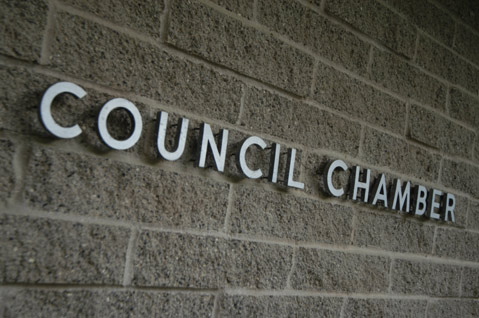
For much of the past 25 years, Carpinteria’s City Hall has been dominated by an unusually congenial and collegial cabal of mushy moderates striving to preserve the city’s coveted small-beach-town character while simultaneously balancing the books. To an uncommon extent, they have succeeded on both fronts.
But in the past four years, the tone and tenor of City Council meetings have come to resemble that of a reality TV show highlighting an unhappy demolition derby of clashing personalities. Earlier this year, for example, Carpinteria Mayor Al Clark felt compelled to publicly rebut the suggestion he’d beaten his wife, made in a letter to City Hall by a member of the public who claimed he was quoting City Councilmember Joe Armendariz; the letter had been included in an official City Council staff report.
Speaking from the council dais, Clark, a bookish man with a puckish sense of humor, challenged members of the public to call his wife and ask her directly. He provided would-be callers with both her home and cell phone numbers. For the record, Armendariz denied making such a statement. Of the council’s increasingly rancorous meetings, Clark said, “It’s been anything but pleasant.”
It would be unfair to lay responsibility for this shift at the doorstep of any single councilmember, but Armendariz and Kathleen Reddington have emerged as the most obvious council lightning rods. Both councilmembers are intelligent, verbose, and passionate in their politics. Both tend to lead with their chins; neither is inclined to turn the other cheek.
Though Reddington is about as far to the left as Armendariz is to the right, these two have formed an unlikely working relationship. Both have locked horns frequently, loudly, and vigorously with Councilmember Brad Stein, a moderate slow-growther now entering his 24th year of service, and less obviously with the two remaining councilmembers.
Stein is not up for reelection. Armendariz, having been arrested last December for flipping his car while driving drunk, has opted not to seek another term in office. Of the three, only Reddington’s name is on the ballot this November, and she — an unequivocally green Democrat — finds herself forced to struggle to secure support from Carpinteria’s highly influential slightly left-of-center machine. But members of the Carpinteria Valley Association declined to endorse Reddington — citing her lateness to meetings and propensity to talk — even though they’re in agreement over most major votes.
Of the four other candidates vying for the two council seats, Fred Shaw and Wade Nomura are as well-known for their easy-going demeanors as they are for the depth of their community involvement. Shaw is a progressive Democrat and Nomura a moderate Republican; both stress their ability to get along with others. Both hope to garner crossover support in what’s nominally a nonpartisan race.
Likewise, Greg Gandrud, a former councilmember and Republican Party activist now attempting a comeback after a six-year hiatus, has mellowed considerably since he first ran as a libertarian-minded conservative 12 years ago. Less known is candidate Tom Perry, a former co-owner of Carpinteria’s Sunburst printing company, who worries that Caltrans’s freeway expansion plans won’t cure what ails Carpinteria’s serious congestion problems, but, instead, will make matters worse.
In recent memory, the Carpinteria City Council has banned plastic bags, polystyrene, and smoking anywhere in public. Two years ago, voters overwhelmingly rejected Venoco’s proposal to erect a new slant drilling operation off the coast, an expression of anti-oil sentiment shared by all but one councilmember. More recently, the council rejected a daytime curfew law strongly backed by law enforcement and the school board. It also cut back on the number of Sheriff’s Department personnel assigned to protect and serve Carpinteria, citing the escalating cost of the city’s contract with the department.
Even though City Hall has accumulated healthy general fund reserves — $6.8 million — abiding financial pressures prompted the council to ask voters to approve a ballot initiative this November to hike the bed tax charged to hotel and motel guests. A number of major businesses — Tyco Electronics and Magellan’s — have recently announced plans to vacate their Carpinteria premises, while developer Jack Theimer has unveiled a proposal to build a major upscale resort at the south end of the Carpinteria Bluffs.
Albertsons doubled the size of its Carpinteria store with council support, reopening as one of the two greenest grocery stores in the state. Looming over all this are Caltrans’s long-simmering plans to build two new freeway overpasses in Carpinteria — one at Linden Avenue, the other at Casitas Pass — and many residents worry that the Casitas Pass proposal, with five traffic lanes, two bike lanes, and two pedestrian-friendly sidewalks, could add an unwanted element of Goleta to Carpinteria’s otherwise picturesque personality.
Lefty Firebrand
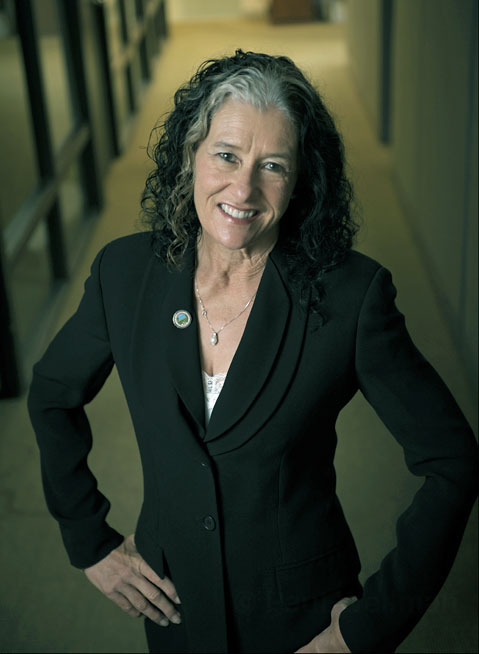
With Democrats enjoying a two-to-one advantage over Republicans in Carpinteria and President Barack Obama still popular in California, Reddington would normally be a shoo-in. She still may be. To some extent, Reddington downplays talk of the council contention. “I don’t think they’re ‘arguments’; I think they’re discussions and healthy debates,” she said. Still, she acknowledges relations with Councilmember Stein — with whom she frequently votes — are seriously strained. “When you have a councilmember roll his eyes, huff and puff, make comments under his breath, hyperventilate, and grunt when I talk, I don’t know what kind of response is appropriate,” she said. “But I won’t be bullied.”
This spring, the City Council adopted new rules of discourse in part to limit the verbal sparring between Stein and Reddington, but also to limit the back-and-forth between Reddington and members of the public. Reddington, a former journalist, said she makes a point to ask lots of questions during meetings not because she’s ill-prepared but to educate members of the public about what’s going on and why in language they can understand.
By doing so, she explained, she hopes to alleviate much of the public’s alienation with the political process in hopes of engendering broader political participation. But this, she said, challenges Carpinteria’s status quo, which has enabled a small group of people to make most of the decisions. Beyond her green agenda, Reddington said her goal as a councilmember has been to open up the process. To that end, she takes credit for the creation of the advisory Design Review Team, which is charged with overseeing the freeway expansion plans; the Integrated Pest Management Team, which reviews alternatives to pesticide use; and the Neighborhood Preservation Committee.
Reddington grew up in Illinois, where her parents ran a 300-acre farm. She moved to Carpinteria from Los Angeles 15 years ago with her husband, then working in the film industry, and her daughter. Five years ago, her husband was hit by a car while riding his bike and suffered major brain injuries, and his recovery is far from complete. Many of the times Reddington has been late to meetings, she said, was because she was forced to haggle with her husband’s doctors, insurance carriers, attorneys, and rehab providers to ensure his continued care.
As a councilmember, Reddington is credited — even by her critics — with bird-dogging certain issues (like the bag ordinance) so they don’t fall by the wayside, get studied to death, or talked to death. She knows she can at times grate but said, “Even people whose hair I raise on the back of their necks will tell you I take strong stands.”
One issue Reddington hopes to push harder should she be reelected is commuter rail. “We’re looking at 15 years of freeway construction. We got $1.5 million to study commuter rail,” she said. “Where did it go? What are we doing with it? We need some answers. I’m not timid about asking questions.” And despite the acrimony, Reddington gave herself and the council high marks. “I’m a visionary. I’m a leader. I’ve done what I said I’d do. And in spite of everything, we got a lot done.” Though Reddington has not been endorsed by any council colleagues, she is supported by the Sierra Club and the Democratic Central Committee.
Worker Bee
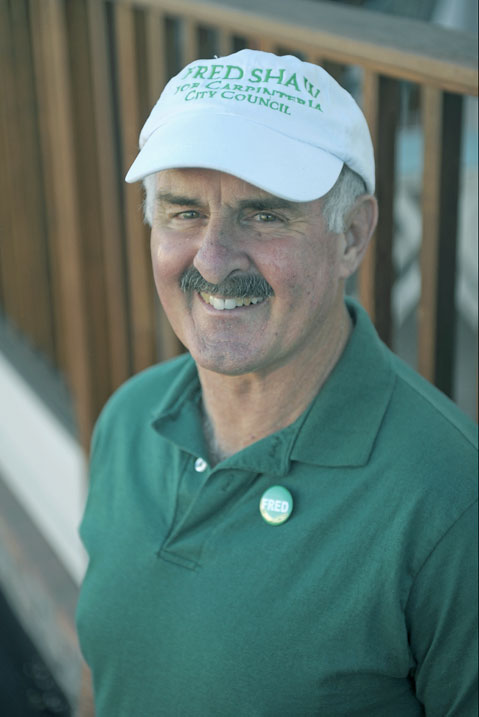
If candidate Fred Shaw has racked up the most endorsements — Carpinteria Valley Association, Democratic Central Committee, Planned Parenthood, Sierra Club, and Councilmembers Greg Carty and Brad Stein — it might be because he volunteers for the most community groups. Shaw, who retired to Carpinteria 15 years ago from the San Fernando Valley, where he worked as a postal carrier, is a self-described “worker bee,” volunteering for groups like Seal Watch, Carpinteria’s downtown Host program, the Rotary Club and Chamber of Commerce, and Carpinteria Beautiful. He knocked on doors and walked precincts to get the current slow-growth slate of Al Clark, Stein, and Carty elected, and did the same to get Venoco’s slant-drilling project defeated.
Like Reddington, Shaw also grew up in the Midwest. His father, a salesman, was a Republican Party activist with enough juice to be on first-name relations with Arizona Senator John McCain and to have had his picture taken with Ronald Reagan and the first president George Bush. Shaw first voted in 1964, when he cast his ballot for GOP warhorse Barry Goldwater. But after a three-year stint in the Navy from 1964 to 1967, his worldview began to change. Now he considers himself a progressive Democrat. Given that history, Shaw said, “I’ve learned how to disagree with people and still get along.”
That skill will no doubt help. So, too, will his volunteer history. And so will his residency in a mobile-home park and unequivocal support for mobile-home rent control, always a hot-button issue among Carpinteria’s hundreds of mobile-home residents. But for all of Shaw’s community involvement, he has no direct experience with City Hall boards or commissions.
Of the Theimer project, Shaw said, “On paper, it looks very promising.” As to whether the Casitas Overpass should be four or five lanes, he’s still not sure. He opposed the proposed daytime curfew, arguing criminalization is not the best way to address truancy. He said the council should figure out a way to keep some of the gyms open after dark so that people in the 17-to-25 age bracket had someplace to go. He praised the new Albertson for its “zero waste” policy. If elected, he said, he’d strive “to figure out how to get along with people and move forward.”
Youth Advocate
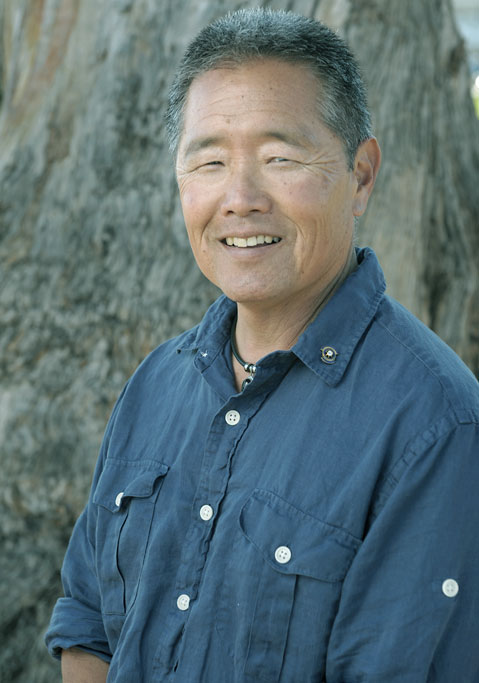
It’s tempting to regard Wade Nomura as Fred Shaw’s Republican alter ego, except Nomura has served on the city’s Architectural Review Board for 22 years. Nomura, a heavy hitter with the Rotary Club — the one that meets in the morning as opposed to noon — led the fundraising charge for the new Tomol Interpretative Park located right next to the downtown railroad depot.
An amateur BMX racing champion back in the 1980s, Nomura said City Hall needs to invest more in the youth. The new Tomol park offers kids a place where they can share happy memories with their parents, he said, while harkening back to Carpinteria’s roots. (Spanish explorers dubbed the area “Carpinteria” when they saw the Carpinteria Chumash building tomols there using tar from the abundant natural oil seeps in the area to caulk and waterproof the plank canoes.)
Nomura grew up on the Mesa and moved to Carpinteria in 1977 because Santa Barbara had grown too big. “I didn’t know everybody anymore,” he said. Since then, he’s operated a successful landscaping company, and his wife, Roxanne, is a well-known real estate agent. On the issues, Nomura weighs his words with care. When asked what he regards as the proper balance between fostering economic growth and preserving Carpinteria’s character, he said, “You have to find the middle road and see where the consensus goes.”
On Venoco’s ill-fated oil proposal, he said he took no position at the time but said he respects the will of the voters now. Of the Theimer project, he said, “It appears to be the least impactful” of the three proposals he’s seen for that land during his tenure on the ABR. Mobile-home rent control, he said, “has worked satisfactorily,” but suggested the council should have made sure there were alternatives to the plastic bag in place before passing the city’s bag ban.
Nomura argued City Hall needs to do more to address the needs of youth, saying the money is there for the asking from the private sector. This, he said, he knew from his Rotary work. Nomura served as president for the four county Rotary clubs, overseeing $10 million in annual donations going out to 12 nations. No other candidates, he said, had that kind of international leadership experience.
Mellower Man

Like Nomura, former councilmember Greg Gandrud has seized upon his city’s historic traditions, seeking to preserve the historic trail the de Anza expedition took through Carpinteria 225 years ago on its way from Mexico to San Francisco. It was as the de Anza party traipsed through the property on which Jack Theimer now wants to build his resort hotel that the Spanish explorers dubbed the region Carpinteria.
For the past six years, Gandrud has served as an appointee to a state advisory committee on trails in general and as the head of a private nonprofit dedicated to preserving as much of the de Anza trail as possible. Gandrud says his business background as a tax accountant would serve City Hall well and that he’d make sure Carpinteria got meeting rooms and banquet halls affordable to the community should any Theimer project be approved.
Gandrud first burst onto Carpinteria’s political scene in 2000, running as a Libertarian and losing by 14 votes. Two years later, he ran again and won by 11. For a while, he served as the lone dissenter. When Armendariz was elected eight years ago, it appeared the council might have a conservative bloc, but the two had a falling out and never worked that effectively together.
Since then, Gandrud has landed leadership positions in Republican circles, both statewide and locally. “I believe in more freedom, less government,” he said. On the council, Gandrud sparred with Councilmember Stein and other members of the majority. “I’ve grown older and mellower,” he said. “I’ve gotten less reactive to mean people.”
On the issues, Gandrud takes exception to the city’s smoking ban, arguing, “Responsible adults should be allowed to grab a smoke while walking on the beach at night,” he said. He added he’d favor heavy fines for litterers. Gandrud said he supported the Venoco oil project, arguing the revenues generated would have definitely helped the school district and City Hall. He expressed offense at having been “demonized” by anti-oil activists for this support, saying, “We’re supposed to have such ‘small town’ charm, but I find that attitude very ‘un-charming.’”
When on the council, Gandrud banged the drum loudly for freeway widening, garnering accusations of political grandstanding. Today, he said he understands how the five-lane proposal for the new Casitas Overpass could strike some as a “big sterile expanse of concrete” and suggested that the use of natural elements like stone and even trees could soften the effect. As a councilmember, Gandrud said he supported the “most aggressive” defense of the mobile-home rent-control ordinance, even though it cost City Hall hundreds of thousands of dollars to defend.
And while he said he supports the bag ordinance, he said the council should have listened harder to small businesses and allowed more time for implementation. City Hall, he said, could ill afford to be so “unfriendly” to small businesses and needed to work far more collaboratively with the school district to ensure student success. He opposes the bed-tax increase on the November ballot but cited survey results paid for by City Hall showing that education is the number-one concern of most respondents.
Charm Defender
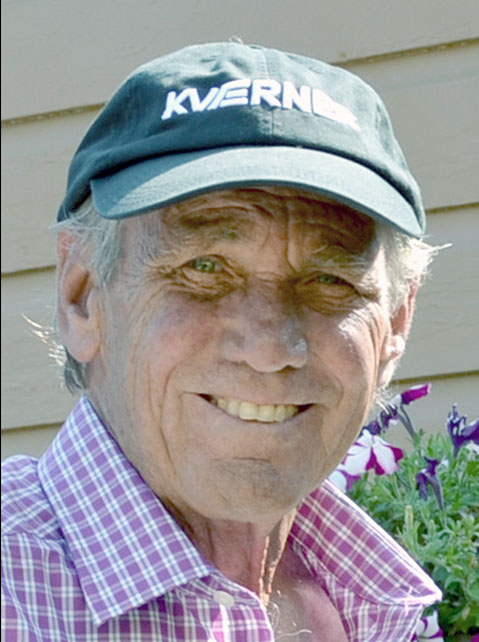
While most candidates talk about their need to give back to the community, candidate Tom Perry does not. “I’m 62 years old,” he said, “and I need an easy job.” Perry was appointed by the council to serve as an alternate member of the Design Review Team that bird-dogged the freeway plans. What Perry saw of the Casitas Pass Overpass plans, he did not like. “We’re building a gateway to Carpinteria, but we’re pointing it toward the foothills and the empty ag land,” he said.
Rather than spend millions on the expanded Casitas Overpass, he said, Caltrans should have proposed a new crossing on the north end of town by the Eighth Street Bridge. That’s where the people are, he said, and the biggest logjam. Perry shows up at City Council meetings on occasion to report on how vastly underutilized the MTD shuttles are; he brings photographic documentation.
Perry moved to Carpinteria from Chatsworth with his family in 1962 at age 10. At age 18, he settled down on his own. He liked to surf. He opened the Sunburst Printers — no relationship with Norm Paulsen’s Brotherhood of the Sun community — with his former wife in 1969 and ran it until they parted ways in 1987. He described the printing press as “the tool of freedom” and said the shop served as a meeting place and headquarters for some of the community leaders who helped incorporate Carpinteria as a city.
While Perry’s timeline at times gets confusing — he was 13 when the city incorporated — he takes inspiration from the likes of Lois Sidenberg, one of the South Coast’s first anti-oil activists, and Ernie Wullbrandt, one of Carpinteria’s most enduring political personalities. “When people run for office, they talk about protecting Carpinteria’s small-town charm — everybody’s used that phrase, but nobody’s defended it,” he said. “I’m going to hold onto that.”


